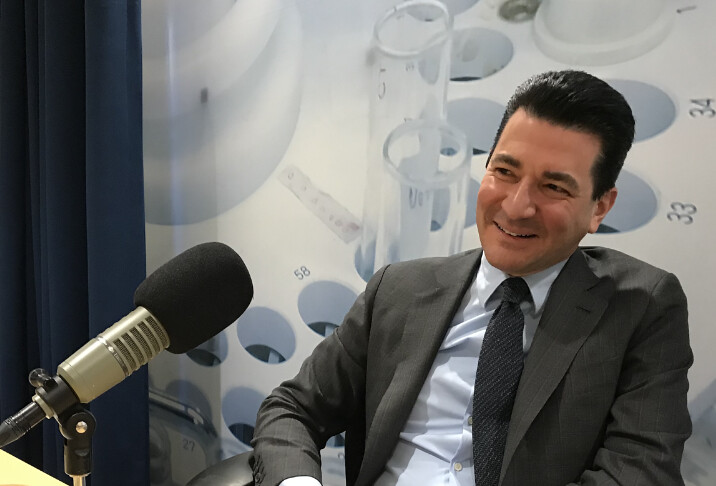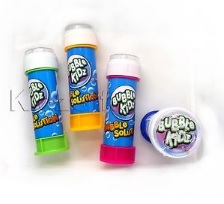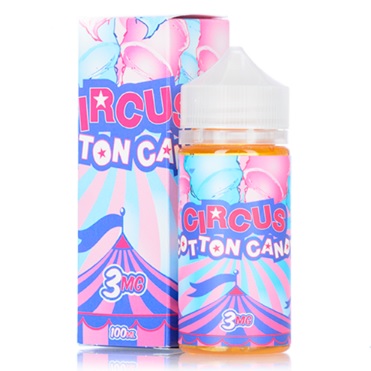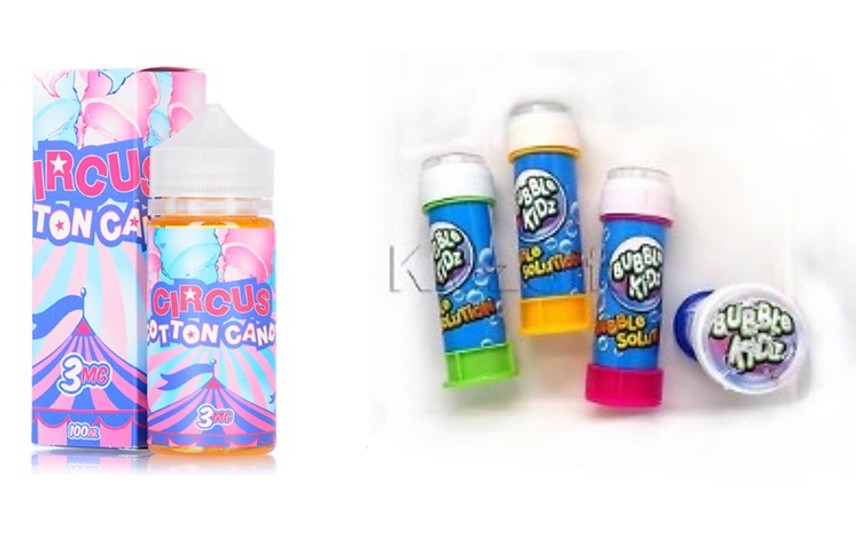Source: Politico
There is no doubt that among adults in the nation, electronic cigarettes have reduced numbers of combustible cigarettes over the past decade. Which has corresponded with an increased sale/use overseas incidentally. What is of question is the degree of toxicity associated with the use of electronic cigarettes (e-cigarettes for short).
Furthermore, the tobacco industry which has moved into the e-cigarette space has taken advertising to a new level of concern among users. So much so that the Food and Drug Administration has had to deal with the emerging threat to young teens (and children) in some cases - with the new e-cigarette products. What do I mean specifically? Let me explain in short below before I show what is the end result or what is coming.
What is wrong with e-cigarettes?
electronic cigarettes (e-cigarettes) have been advertised as a 'safer alternative' to the traditional combustion based cigarette. While there may be merits (a few), the emerging data shows that the transition is more of a change from one dangerous habit to another. Which is to say, each method of obtaining your tobacco (nicotine) fix has advantages and disadvantages. The differences are that the emergence of the e-cigarette bring a whole host of unknown dangers which have yet to be explored. To name a few, here are some questions about parameters surrounding the use of e-cigarettes:
What are the long term effects of inhaling large amounts of propylene glycol?
What are the long term effects of inhaling large amounts of trace metals?
What are the long term effects of breathing in products of partial (incomplete) combustion?
How does a laboratory or agency measure the total amount of nicotine delivered in a given 'vape' inhalation?
Has that inhalation been standardized or studied for chemical analysis?
These are open ended questions. Some of which have research projects which have already begun to shed results. In a past blog (over a year ago), I listed an article from the trade journal 'Chemical & Engineering News' which shed light on the profile of chemicals (heavy and light metals) which are inhaled during the process of vaping. Specifically, aside from the metals - what are the long term effects of inhaling propylene glycol? This was asked in an editorial from 'Nature Neuroscience' a few years ago.
Additionally, in a different blog post, I showed the relative amounts of nicotine sold in a traditional bottle of e-liquid with the equivalent amount of combustible cigarettes (through dimensional analysis). Check them out. Which bring us to the real danger behind the growing use of e-cigarettes -- that is among young (new users) under the age of 18 years old.
To start to explore the dangers associated with advertising to people under the age of 18 years of age, let's start a search using a search engine. Type into a search engine the following statement: "Bubble making liquid" Below is one of many pictures advertising liquids that kids can use to make bubbles:
Source: E-Bay
The image shown above, as mentioned, is a small bottle of liquid used to make bubbles for kids to handle. Now, the next search type into a search engine the following: "Candy juice" The following is one result shown below:
Source: E-Juice Deals
The result above shows a commonly sold bottle of e-liquid. An e-liquid is essentially made up of the following ingredients (chemicals): nicotine, propylene glycol, and flavoring. Finally, let's line both of these products up next to one another as shown below:
Looking at the two products above, a person has to really focus to find differences. And I am an adult. What if a child was asked to tell the differences? Therein lies the issue at hand. Aside from the increase among teens in e-cigarette use are the young children who are potentially exposed to dangerous amounts of nicotine (which can be poison). How?
What if a child spills e-liquid on his/her skin? The concentration of the nicotine can compare to that of the 'LD50' -- Lethal Dose where 50% of the tested population is killed off. Check out how e-liquid concentrations compare to the LD50 of nicotine -- click here. Chemicals associated with the use of e-cigarette remain unanswered which means that the interpretation is that e-cigarettes must be safe. Whereas, decades of cigarette use by tobacco companies along with federal agencies have clearly established that smoking combustible cigarettes is dangerous and leads to cancer.
Take home message: unknown dangers could potentially still exist with e-cigarettes and marketers should not be targeting children and teenagers in the mean time.
What Does Director Scott Gottlieb Say Regarding E-Cigarettes?
With the above being stated, what does the Food and Drug Administration write/publish about the emerging dangers surrounding e-cigarettes? In the text of the speech below, FDA Director Scott Gottlieb states the current position of the Food and Drug Administration at this moment in time. Shown below is the entire speech given by FDA Director Scott Gottlieb on January 18, 2019:
I want to begin by thanking you for attending this important meeting, and by recognizing the work of the FDA staff that has continued despite the partial lapse in FDA funding. The current shutdown represents one of the most significant operational challenges in FDA’s recent history. But, as an agency, we’re committed to fulfill our public health mandate, to the best of our abilities, under current circumstances.We’ve had to make hard decisions in the last month to preserve key functions to maintain our critical consumer protection role.And as our biggest user fee program, PDUFA, begins to run out of money, we have many more hard decisions ahead of us. As application workload declines, because we haven’t received new applications, we’re going to be required to furlough additional staff. We simply won’t have enough PDUFA-related work to support all of our staff. This is among the hardest and most painful decisions we have to make. It’s another consequence of the prolonged shutdown. We’ll maintain our critical safety functions, and preserve as much of our review functions for as long as we can.We’re in unfamiliar territory. This is a watershed moment in the life of this agency. We’ll come out stronger for having faced together this challenge, and for having prevailed. But the road between now and the end will be marked by continued hardships for our people, and continued impacts on our work as we focus on preserving certain functions. I’ve said many times, everything we do here is important. And everyone who works here is critical to our mission. To the extent that many things aren’t getting done, and many of our people find themselves furloughed, there are very important activities that aren’t occurring.Today, we’re joined by a broad range of stakeholders to discuss approaches to eliminating youth use of e-cigarettes and other tobacco products. Specifically, our focus is the potential role that drug therapies may play in the broader effort to eliminate e-cigarette and other tobacco use among young people, as well as the appropriate methods for evaluating such therapies.I’m deeply troubled that we find ourselves at this crossroads today. In recent years, we’ve appeared poised to slay one of the most pernicious public health challenges of our times – the death and disease caused by cigarette smoking. Significant strides had been made to reduce conventional smoking among both youth and adults.In fact, this past November, the Centers for Disease Control and Prevention reported that smoking rates among adults reached an all-time low in 2017 — 14% of adults reported cigarette smoking “every day” or “some day,” marking a 67% decrease since 1965.Sadly, this progress is being undercut – even eclipsed – by the recent, dramatic rise in youth vaping. A few years ago, it would have been incredible to me that we’d be here, discussing the potential for drug therapy to help addicted youth vapers quit nicotine.Instead, in recent years, there had been reason to hope that e-cigarettes could play a different role in the nicotine product continuum of risk.When I announced the FDA’s Comprehensive Plan for Tobacco and Nicotine Regulation in July 2017, I believed – and I still believe – that e-cigarettes present an important opportunity for adult smokers to transition off combustible products and onto nicotine delivery products that may not have the same level of risks associated with them. The FDA’s plan was founded on the principle that what primarily causes the death and disease from tobacco use isn’t the nicotine in these products, but rather the harmful chemicals associated with cigarette combustion.But, we also know that nicotine isn’t a benign substance. We know that initiation to, and addiction to, nicotine by never-smokers – predominantly youth and young adults – raises its own set of public health concerns. Over the past year, the FDA’s concerns about the public health impacts, as well as the very personal impacts, of youth use of e-cigarettes and other tobacco products, has spiked along with the escalating popularity of these products.Although we knew that rates of youth use of e-cigarettes had surpassed use of combustibles a few years ago, these rates had recently appeared to level off. Reported e-cigarette use among high school students, which peaked at 16.0 percent in 2015, had decreased to 11.3 percent in 2016 and held steady in 2017. But, in late 2017 and early 2018, anecdotes from policymakers, from parents, and from the press suggested an alarming rise in youth use of e-cigarettes generally and, in particular, the product made by JUUL Labs. Indeed, the ubiquity of this one product became so entrenched so quickly that it gave rise to its own verb – juuling.And so, over the course of 2018, I announced a series of escalating regulatory actions to try to investigate the root causes of this spike in youth e-cigarette use and to arrest the momentum of these trends.Unfortunately, data from the 2018 National Youth Tobacco Survey confirm that youth use of e-cigarettes has become an epidemic. From 2017 to 2018, there was a 78% increase in current e-cigarette use among high school students and a 48% increase among middle school students. The total number of middle and high school students currently using e-cigarettes rose to 3.6 million — that’s 1.5 million more students using these products than the previous year. Additionally, more than a quarter (27.7 percent) of high school current e-cigarette users are using the product regularly (on 20 or more days in the past month). And more than two-thirds (67.8 percent) are using flavored e-cigarettes.These numbers have risen significantly since 2017.Data from the Monitoring the Future study found similar trends: From 2017 to 2018, current (past 30-day) e-cigarette use reportedly increased from 6.6 percent to 10.4 percent among 8th grade students; 13.1 percent to 21.7 percent among 10th grade students; and 16.6 percent to 26.7 percent among 12th grade students.This youth use continues to grow. Even if we’re successful at implementing our regulatory steps to address the access and appeal of these products to kids, those actions will take time to have their full effect. Meanwhile, the appeal of these products to children, and the resulting increase in youth use, shows no sign of abating.I fear that the survey data that we’ll get for next year will show continued increases in youth use of e-cigarettes. We’ll be in the field between March and May with the 2019 National Youth Tobacco Survey. I’ll tell you this. If the youth use continues to rise, and we see significant increases in use in 2019, on top of the dramatic rise in 2018, the entire category will face an existential threat.I find myself debating with tobacco makers and retailers the merits of selling fruity flavors in ways that remain easily accessible to kids. But if the epidemic continues to mount, I’m sure that the debate will change to one of whether these products should continue to be marketed at all without authorized pre-market tobacco applications. It could be “game over” for some these products until they can successfully traverse the regulatory process. I think the stakes are that high. And would be a blow for all of the currently addicted adult smokers who, I believe, could potentially benefit from these products.But the major marketers of these products don’t seem to fully understand the scope of this challenge, or they don’t seem to be fully committed to their own stated commitments to curtail this youth use.I’ve met with senior executives from five of the largest manufacturers of e-cigarette products, and I’ll be calling some of them back to meet again. The companies gave us written commitments about the steps they would take to stop youth use of their products. Are they living up to what were very modest promises? We all need to ask ourselves that question.It matters if the e-cig makers can’t honor even modest, voluntary commitments that they made to the FDA. It informs how we shape our regulatory policies and our enforcement activities.Because we’re not dependent on their voluntary action. The FDA is committed to reversing the youth trends, and, in November, we announced our development of a revised policy framework for certain electronic nicotine delivery systems (or ENDS products), including e-cigarettes. Evidence shows that minors are especially attracted to flavored ENDS products, and that youth access these products from both brick and mortar retailers as well as online.We’ll be focused on ways to ensure that flavored ENDS products are sold in ways that make them less accessible and appealing to minors. We also plan to revisit our policy for certain flavored cigars and cigarillos, which, data show, appeal to minors and continue to be important among first-time cigar users. And, if data continue to show upwards trends in youth use of tobacco products, we’ll continue to expand what we do.But, already, I’ve heard too many painful stories from parents of teenagers, pediatricians, and young people themselves. The stories make clear that, for many young e-cigarette users, addiction has already taken hold. Perhaps the kids didn’t realize that what they were inhaling contained nicotine, a highly addictive chemical. Perhaps they simply thought that e-cigarettes were safer than combustible cigarettes, chewing tobacco, and other forms of nicotine delivery about which they’d been warned. Perhaps the “cool factor” outweighed other concerns.For these addicted young people, the reasons that they tried e-cigarettes may not matter anymore. These young people are hooked on vaping, and their worried parents, physicians, and the public health community are searching for tools to help them quit.This is why, as a public health agency, the FDA must examine the problem of underage use of e-cigarettes holistically. When it comes to youth use of tobacco products, including e-cigarettes, we recognize that there are many facets to the issue. We must not only seek to develop evidence-based programs to prevent youth and young adults from using tobacco in any form; we must also explore evidence-based approaches to address existing youth tobacco use.Although there is a large body of research on adult smoking cessation, the methods to treat adolescents and teens who’re addicted to vaping are not well understood. There is little information about how drug or behavioral interventions might support youth e-cigarette cessation, as well as youth tobacco use more generally. The data and other information presented at today’s hearing will be vitally important to helping the FDA and other stakeholders begin to address these information gaps.I thank you in advance for your contributions, and I speak for myself and my colleagues on the panel in saying that we look forward to the insights that you will share. I also want to be clear that we are listening closely to all perspectives.Already, the issue of how the FDA should address underage use of e-cigarettes, while preserving the harm reduction potential for adults, has sparked powerful commentary from a range of stakeholders. We welcome this dialogue and feedback as we further refine our strategies to address this epidemic. The FDA is committed to addressing this crisis in a comprehensive way, and to finding enduring solutions.Thank you.
Wow - If the rates continue to rise among youths, the category faces an existential threat. What? That is huge. If the rates continue to climb, the Food and Drug Administration Director Scott Gottlieb is basically stating that the benefits among adults with lower use is eclipsed by the danger among youths. Banning e-cigarettes among adults for the benefit of children would be a major action by the FDA. Regardless, vaping (e-cigarette) companies need to change their methodology toward increasing their customer base -- especially, if that increase includes youth (new smokers). The future will certainly be exciting for those interested in this industry. Stay Tuned!
Related Blog Posts:
Scientific Evidence Points To Dangerous Chemicals Associated With Vaping
How much nicotine is in a bottle of e-liquid? Is the level toxic?
EPA Administrator Nominee Andrew Wheeler's Opening Statement - Confirmation Hearing!
NIDA Director Nora Volkow: How Health Communicators and Journalists Can Help Replace Stigma with Science
What is the next big step in Mental Health Research?




No comments:
Post a Comment